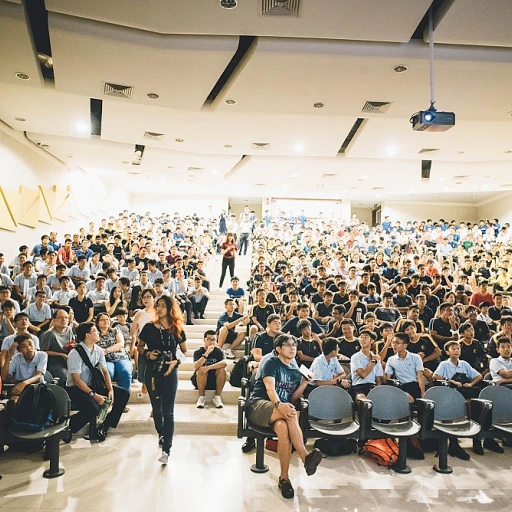
Understanding EmployeeTrack
Introduction to EmployeeTrack
EmployeeTrack is an innovative solution that redefines the landscape of HR management with its cutting-edge software tools. This technology stands out in the field of employee monitoring and performance management by integrating artificial intelligence to streamline operations. The primary function of EmployeeTrack is to facilitate monitoring and management of employee time and activity across various work environments, including remote and in-office setups. EmployeeTrack offers a comprehensive suite of features that encompass time tracking and attendance management. This empowers HR teams to gain real-time insights into employee productivity and work patterns. With the software's ability to collect and analyze data, businesses can identify areas for improvement and implement strategies to enhance efficiency. One of the core strengths of EmployeeTrack is its user-friendly interface, which makes it accessible to HR professionals who might not be tech-savvy. The intelligent design provides easy access to tracking software, enabling team leaders to effectively monitor employee work without being intrusive. Moreover, various parameters such as employee time, performance, and productivity can be tracked effortlessly. In today's fast-paced business environment, optimizing employee performance is crucial. EmployeeTrack supports companies in achieving this goal by using data analytics to provide a detailed view of employee activities. This not only helps in ensuring optimal use of employee resources but also aids in crafting strategies that promote a more efficient and productive business operation. For those interested in exploring how AI-powered intranet solutions can further enhance HR efficiency, a detailed exploration is available here. Such integrations highlight the evolving nature of HR management and the transformative role of AI in shaping the future of work.AI's Role in Employee Management
AI Empowering Employee Management
Artificial intelligence is revolutionizing the landscape of employee management, and EmployeeTrack is at the forefront of this transformation. This advanced software integrates AI capabilities to streamline monitoring and enhance employee productivity within an organization.
One of the main benefits of such tracking software is its capability to monitor employee activity in real time. By automatically capturing screenshots and utilizing video recording, it provides a comprehensive view of employee performance, even for remote team members. It offers the best solution for collecting valuable data that drives informed decisions.
AI plays a key role in employee time management by utilizing algorithms to schedule and track business tasks. It can predict peak productivity periods, aiding managers in assigning tasks that suit the employee productivity rhythm. Such scheduling ensures that both the company and its team maximize output, significantly enhancing performance metrics.
Employee monitoring through AI is not just about time tracking; it also involves assessing how engaged employees are with their work. Through metrics like cls stroke and stroke width, it analyzes the intensity and focus of computer monitoring, thus providing insights into improvement areas.
The technology is continually evolving, offering not just solutions for individual employees but also generating an overview of how entire teams function. AI in employee management is indispensable for ensuring that every employee contributes to management goals, ultimately leading to a more productive workforce.
To learn about a real-world application of AI in HR, explore how a leading company transformed HR with an automated system.
Enhancing Productivity with AI
Boosting Employee Efficiency through Artificial Intelligence
In today's competitive business environment, maximizing employee productivity is paramount. AI-driven technologies, like EmployeeTrack, offer innovative ways to monitor and optimize work processes, even for remote teams. By implementing intelligent monitoring software, companies can track employee activities, ensuring that time spent on tasks is both effective and efficient.
AI integrates seamlessly with tools for time attendance and time tracking. These systems monitor the timing and nature of employee activities, providing a real-time overview of individual and team performance. Businesses can harness this data to make informed decisions, improve management strategies, and ultimately, enhance overall performance.
- Employee monitoring aids organizations in understanding how work is conducted, allowing for adjustments that fill productivity gaps.
- By tracking software usage, companies can evaluate the best employee practices, bringing successful strategies to the forefront.
- Computer monitoring and video recording capture the breadth of work done, providing visual insights where traditional metrics may fall short.
- Integration capabilities with existing systems ensure smooth adoption, giving even small businesses the opportunity to boost their output.
Moreover, AI's analysis of time spent on tasks aids in identifying areas where employees may be under or over-allocated. This employee time optimization is crucial for maintaining the balance between workload and personal wellbeing, ultimately fostering an environment where the team can thrive. The availability of a free trial encourages businesses to explore these tools, helping them discover the dynamics of employee performance without immediate commitments.
Businesses that tap into these AI-powered solutions witness significant changes in their operational efficiency. For further insights into how these solutions can revolutionize your human resources management, explore enhancing workforce planning with AI.
Data Privacy and Ethical Considerations
Balancing Efficiency and Privacy in AI-Driven HR
As businesses increasingly rely on employee monitoring software, such as EmployeeTrack, for tracking and enhancing productivity, it's crucial to consider data privacy and ethical standards. AI-powered tools in HR continuously gather and analyze large volumes of data related to employee activity, performance, and time tracking. The real-time insights provided by such systems aid management teams in making informed decisions to drive business success; however, these benefits must be weighed against employee privacy considerations.
Implementing AI-based monitoring software calls for transparency and clear communication with employees about what kind of data will be collected and how it will be used. This fosters trust and ensures that all parties are on the same page regarding the objectives of using such technology. Employee consent is a critical factor here, especially when dealing with sensitive data derived from activities like video recording or computer monitoring.
While AI technologies can dramatically improve employee productivity by offering precise analytics and facilitation of remote work arrangements, they also bring about ethical dilemmas. Defining the boundaries of data access and tracking practices is essential to maintain a balance between optimizing workforce efficiency and respecting employee privacy.
Furthermore, it is essential for companies to comply with regulatory standards concerning data protection. Thus, regularly updating privacy policies to adapt to ever-changing data protection laws should be a priority, ensuring ethical deployment of technologies like EmployeeTrack. Companies exploring these tools may consider options that offer free trials to understand their potential impact better before full-scale implementation.












